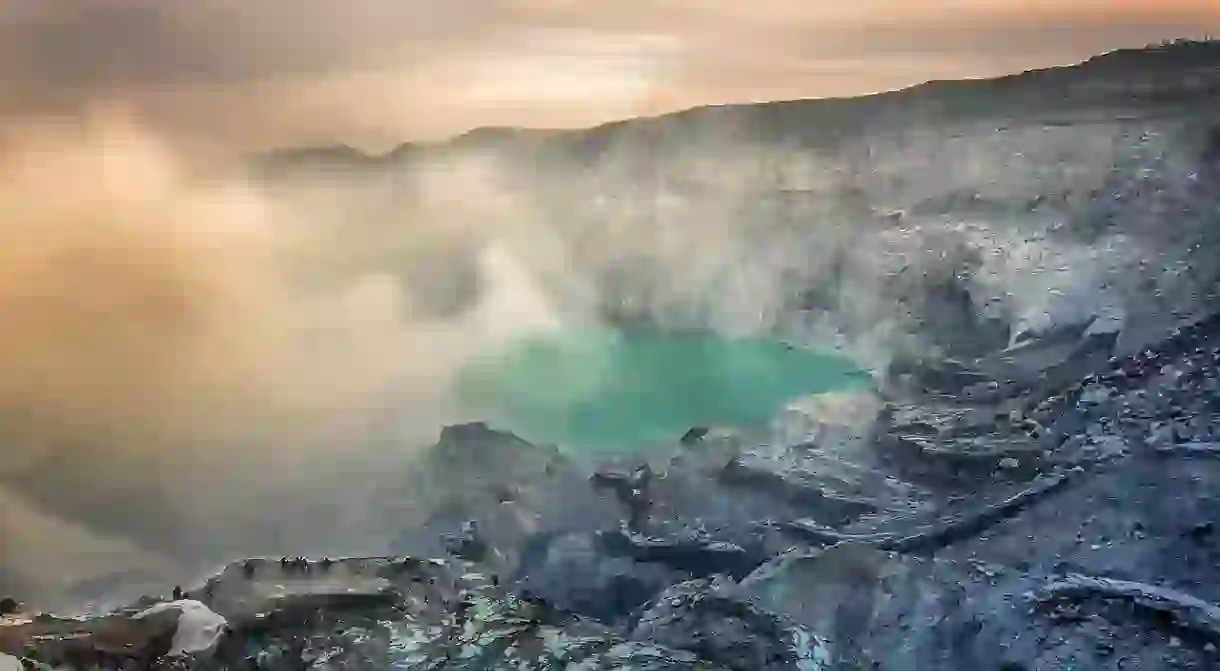This Volcano in Indonesia Produces Blue Flame

Indonesian volcanoes have long been objects of wanderlust and bucket list, famed for their raw natural magnetism and often cultural or mystical attributes. But Ijen volcano is something else indeed. This volcano in East Java attracts a whole load of curious travelers for its electrifying blue flame.
Mount Ijen was first ‘discovered’ and exposed as a widely known tourist attraction around 2014. It has since gained more popularity among travelers, as the curious phenomenon shows up in more travel and scientific publications. Before that, the mystifying sight of blaring blue fire was reserved only for the sulfur mine workers on the site.
Ijen is an active volcano in Banyuwangi Regency, East Java. It has been recorded to erupt four times, with the last eruption happening in 1936. And even though the Ijen is not as popular as the neighboring Semeru, Bromo, and the like, the Ijen crater caldera is actually the largest in Java, not to mention the world’s largest high acidity lake on the top, and the famed blue flame.

What’s with the blue flame?
Many publications confuse Ijen’s blue flame as blue lava. The truth is, Ijen’s lava is as bloodshot as any other volcano’s. In fact, if you top Mount Ijen during the day, you’ll observe different hues of red, orange, and yellow in the hot molten lava.
The enchanting blue blaze is actually the volcano’s sulfuric gas, set ablaze by the thermal energy from the hot lava when exposed to oxygen. The combustion appears as blue fire due to the intense energy relayed by the process.

The Ijen volcano complex has some of the highest levels of sulfur, making such a combustion process epic enough to produce the otherworldly effect sought by many. The process may happen around the clock, but it’s only visible in the darkness of the night. In fact, the best (if not only) time window to observe this phenomenon is around 3 AM until dawn.
The top of Ijen is also home to the Ijen crater lake, which is very high in hydrochloric acid, making the water radiate a unique blue-ish green. The Ijen crater lake is also the world’s largest high acidity lake.

Not blue lava
While the misconception is understandable for quick observers, a deeper look into the blue volcano phenomenon reveals that the electric blue substance that overflows the crater is indeed flame and not lava. Sometimes, it may look like blue lava is spilling down the sides of the mountain, but it’s actually sulfuric gas condensing into liquid before drizzling down the rocks in its galvanizing shiny blue hue.
Life at the blue volcano
Long before attracting curious daredevils, Ijen’s rich sulfur has been the main livelihood for many locals. Sulfuric rocks, which are formed after the gas cooled and solidified, were collected by miners old and young. These miners sold their rocks for a mere pittance, especially considering the struggles they endured and the hazards of their labor. Some craft their sulfuric rocks to make little souvenirs and sell them to visitors.

Even tourists who had spent less than a day in the blue volcano can’t get the sulfur smell out of their skin and clothes for days after. But smell is the least of the miners’ problems, as prolonged sulfur exposure can damage the respiratory system and lead to various health problems.
Some miners may even offer a ride for weary tourists who are still determined to reach the mountaintop. These miners will ask the tourist to hop on the cart otherwise used to carry sulfur, and push their way up the hill.













